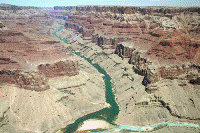United States Geological Survey

Geochemistry of Sulfate Minerals: A Tribute to Robert O. Rye
Date of this Version
2005
Abstract
Sabkha deposits in the geologic record are commonly used to interpret the environmental conditions of deposition. Implicit in this use is the assumption that the solute system is chemically closed, that is, the authigenic minerals represent the composition of the fluids in their environment of origin. Thermodynamic and mass-balance calculations based on measurements of water and solute flux of contemporary Abu Dhabi coastal sabkha system, however, demonstrate that the system is open for sodium and chloride, where nearly half of the input is lost, but closed for sulfur, where nearly 100% is retained. Sulfur and chloride isotopes were consistent with this observation. If these sabkha deposits were preserved in the geologic record, they would suggest a solute environment rich in sulfate and poor in chloride; yet the reverse is true. In most coastal-sabkha environments, capillary forces bring solutes and water to the surface, where the water evaporates and halite, carnallite, sylvite, and other soluble minerals are precipitated. Retrograde minerals, such as anhydrite, calcite, dolomite, and gypsum, however, precipitate and accumulate in the capillary zone beneath the surface of the coastal sabkha. Because they possess relatively low solubility and are below the surface, these retrograde minerals are protected from dissolution and physical erosion occurring from infrequent but intense rainfall events. Thus, they are more likely to be preserved in the geological record than highly soluble minerals formed on the surface.


Comments
Published in Chemical Geology 215 (2005)